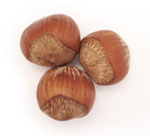Dr Dillner’s health dilemmas: Should I have a Caesarean Section?
Posted by: admin on: January 5, 2012
Should you opt for a caesarean section if there’s no medical reason to do so? What is best for your baby and for you?
-Team@CMHF
- What every mother wants most is a healthy baby.
- And not to have her pelvic floor wrecked by a prolonged and painful vaginal delivery.
- Already one in four babies is removed surgically from their mother’s womb for inconsistent reasons, and at considerable expense to the NHS.
- Now the latest National Institute for Health and Clinical Excellence (Nice) guidelines (albeit in draft form) say that all women can have caesarean sections if they want one.
- But should you opt for it if there’s no medical reason to do so? What’s best for your baby and you?
- The dilemma
- Nice says that women usually ask for a caesarean section because
- They are scared of giving birth (up to 10% of women have a fear of labour)
- They’ve had a bad birthing experience or a previous section.
- Nice is clear that all women should be provided with evidence-based information to help them make decisions about how they want to give birth.
- They recommend planned caesareans for women with medical indications such as the placenta covering the neck of the womb, a twin pregnancy in which one baby doesn’t look as if they will be delivered head first and a breech, in which the baby can’t be turned.
- However, they have now changed their guidance to suggest that a section is also a reasonable option for any women who have weighed up the risks and benefits.
- Research now shows there is little difference in risk between a planned vaginal and a planned caesarean section.
- The planned bit is important though: both an unplanned vaginal delivery (for example a woman who was meant to have a section but went into premature labour) and emergency section (for example if the baby is showing signs of distress during labour) will usually have worse outcomes than planned procedures.
- Nice divides the evidence into risks and benefits for mothers and babies.
- Fewer women who have had caesarean sections will still be breastfeeding their babies by three months.
- They will, however, take the same time to have sex again as women who have had a vaginal delivery, despite being less likely to have damaged their vagina.
- Women who had a planned section (not having had one before) will have less perineal pain and less risk of vaginal bleeding after the baby is born.
- But they will have an increased risk of needing a hysterectomy (0.03% compared with 0.01% for women delivering vaginally), developing a blood clot in the leg and having a cardiac arrest, although the evidence for the latter is weak.
- Generally the risk of anything bad happening in labour is very small.
- The evidence is also poor on which mode of delivery is safest for the baby.
- One study found an increased risk of babies dying after a section (0.17% versus 0.007% for vaginal births), but another did not find that.
- Both studies again, said Nice, like almost all the others, were of poor quality.
- The solution
- What Nice doesn’t tell you is that having a caesarean, even with regional anaesthetic, feels as if someone is doing the washing up inside your abdomen.
- When the baby is born, it is tricky to have good skin-to-skin contact.
- A section is a surgical procedure with all that entails, including a catheter at the time, and afterwards a scar and flappy bit of skin under your scar.
- It is hard to pick up a toddler, and pretty painful to pick up your newborn in a hurry.
- However, Nice now says you can drive when you feel you have recovered instead of waiting for the traditional six weeks.
- Giving birth vaginally is variable: some women have a quick, painless labour, others have prolonged agony.
- It is not as controlled as a caesarean and can even happen in the supermarket.
- Some women feel they do not get enough support from midwives when they are in labour.
- So what should you do? You should look at the evidence – Nice presents all of the statistics online – and then decide.
- As a default, I would say that nature gave us a channel for childbirth and it wasn’t a zip on our bikini line.
- When the writer Sheryl Feldman said: “There is power that comes to women when they give birth. They don’t ask for it, it simply invades them, accumulates like clouds on the horizon and passes through, carrying the child with it,” she wasn’t talking about a caesarean section.
- Pregnancy is not a medical condition so it seems counter-intuitive that it could routinely end in a surgical procedure.
- Nice says, if you are worried, you should discuss your fears with your antenatal team.
- If you have a section and want to try a vaginal birth next time, you are likely to be able to have a successful, normal birth.
Search
- drchasrani: Difficult to get such a data, authenticated at that. Try Times of India online library
- rakesh pore: hi, where can i get genuine information about "10 most common drugs sold in india?" i want it for a local project
- nilesh dutta: sir, Plz give detail about MBA Sports Management Thanks and Regards


Leave a Reply